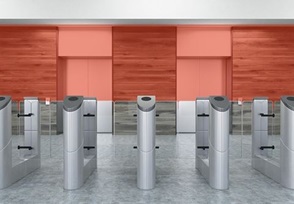
Preventing unauthorised people from entering a building, or parts of a building, is the key to the security of the premises. In busy buildings, like corporate buildings, distribution centers, museums, and more, it is also important to prevent unauthorised access without restricting the movement of authorised people throughout the building.
Optex Lidar technology has the ability to create virtual doors or walls that will work hand-in-hand with the access control system to provide an appropriate level of security while keeping the space open and accessible.
The short-range Redscan series offers the ability for a virtual detection pattern to be created. This mode allows for a virtual door to be created and accurately protects the opening of a room, lobby, or other indoor space. When a person walks through the virtual door, the system can be configured to trigger an alarm. The RLS-2020 Lidar series features dry contact outputs that can easily be connected to an access control system or alarm panel. The series is Grade 3 compliant so it can easily be added to a Grade 3 intruder alarm system.
The system can also be set up to communicate with the access control system to validate the credentials of the person going through the virtual door.
Valid authentication can be sent to the Redscan sensor through the dry contact input by installing an access card, fingerprint reader, or keypad near the virtual door. If the person entering the area has valid credentials, there will be no alarm triggered.
According to the company, the Optex RLS-2020S is used regularly for creating virtual doors in buildings with an open interior where physical doors would tarnish the aesthetics of the building, or in warehouses where physical partisans cannot be put up to block off restricted areas.
Turnstiles are a popular method of managing the access of employees or visitors to restricted areas, but they can easily be jumped over. Utilising these sensors, virtual walls can be created above the individual turnstiles and connected to the access control sensor. If a person has presented valid credentials to enter the turnstiles and moves through the virtual wall, no alarm will be triggered; but if there are no valid credentials presented, an alarm will trigger when the person moves through the virtual wall.
There is also the possibility to create a virtual wall between the access reader and an automatic door to validate the presence of a person before automatically opening a door.











